

I have madrones thriving in seepy wet areas alongside Spiranthes (ladiestresses) orchids. In one exceptionally wet summer, a madrone began to turn brown, looking very much like root rot, but it was in a stable rocky formation and immediately recovered when with dryer weather. On the other hand, quite well established madrones in deep heavy clay soil have on occasion up and died when a hot dry spell immediately followed a wet period. When this happens, they don't actually die quickly, but one is helpless to prevent the ultimate end. (Cf. 'Not a success'.)
I estimate that some 500 young madrones have been established without human intervention in the area above my largest tree, from seeds deposited primarily by birds and raccoons, and I am continually finding new volunteers. All but a handful of these got their start in the rich mulch under the junipers. Other plants benefitting from this medium include white honeysuckle (Lonicera albiflora) and crested coralroot (Hexalectris spicata). In several areas where junipers have become large in open grasslands madrones are volunteering under the junipers. (These were originally KR bluestem, but native grasses are slowly replacing it.)
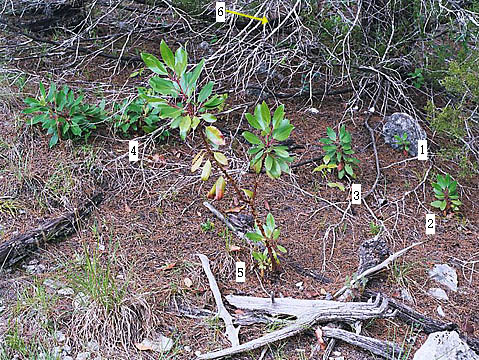
But madrones have also volunteered in areas of oak mulch, along a stream bank and in areas which are regularly mown. I conclude that the juniper mulch is a valuable planting medium, but not essential. [See The Madrone—Juniper Association and Ashe Juniper as a Madrone Nursery Tree.]
I initially considered the availability of subsurface moisture to be a significant factor. Our land consists of a small valley with an all-weather creek and springs between two higher hillsides on the east and west. The Glen Rose limestone strata slant from west to east, thus producing springs, seeps and seasonal wet areas only on the west side of the valley. Although most volunteer seedlings have been found on the west slope, as the junipers on the east slope have begun to provide more shade and mulch, young madrones have recently been found there as well. This east/west asymmetry may actually result from bird and animal dispersal patterns, and, only indirectly, the impact of moisture on the size of junipers.
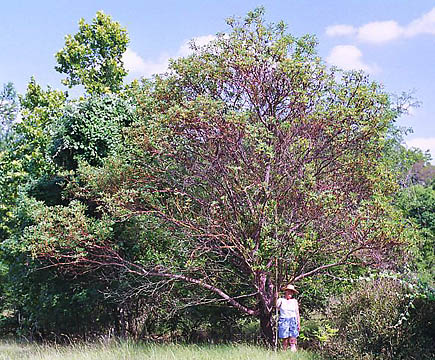
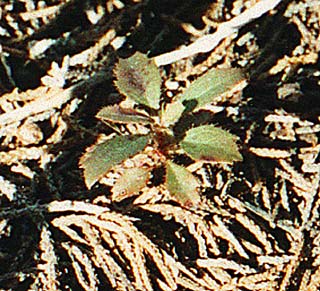
|
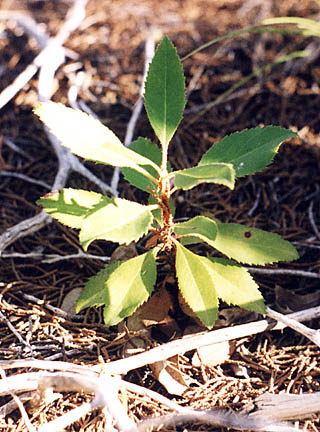
|
As can be seen in the above photos, growth in the wild can be very slow. Only one volunteer (not in deep clay) has died — as the result of an armadillo digging down at its base, damaging the root. In somewhat better soil, growth can be somewhat faster, as with the plant shown below:
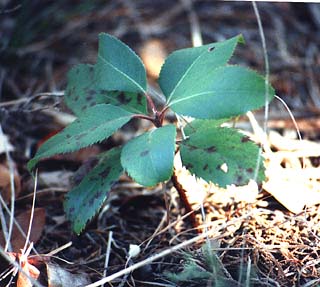
|
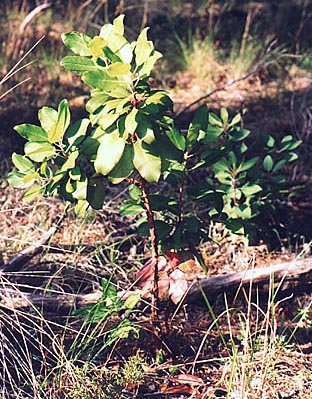
|